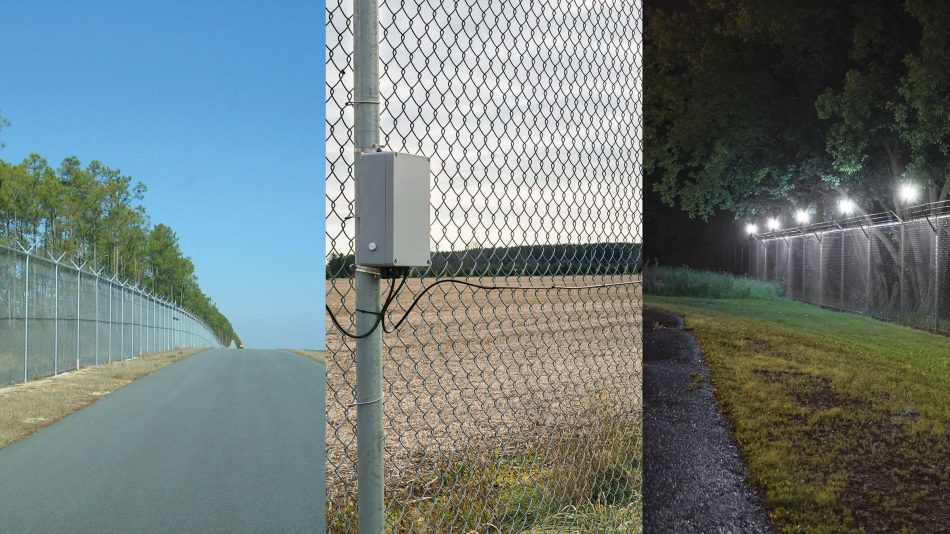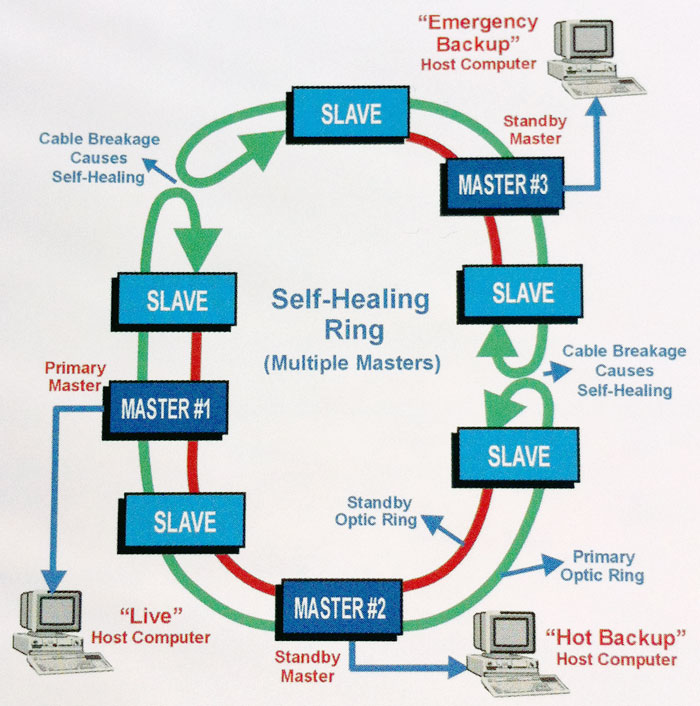Why Fiber Optic Security Systems Are the Future of Defense
The shift to fiber optic protection systems notes a considerable innovation in the realm of security, driven by their phenomenal information transmission abilities and durability to external disturbances. These systems not just facilitate faster and more trusted interaction however also offer a cost-effective option with minimized maintenance demands. As the landscape of security progresses together with emerging technologies such as AI and IoT, the potential for optical fiber to improve and redefine safety infrastructures becomes significantly evident. The implications of these innovations increase crucial inquiries regarding the future of security procedures and their effectiveness in an ever-changing atmosphere.
Advantages of Fiber Optic Solutions
One of the main advantages of fiber optic systems is their superior bandwidth ability, which promotes the transmission of large volumes of data over lengthy distances without substantial loss. This characteristic is especially useful for protection applications that need the constant monitoring and transfer of high-definition video clip feeds, sensor data, and other crucial info. Fiber optics can suit the expanding demands of modern-day safety and security systems, making sure that data continues to be intact and dependable.
Furthermore, fiber optic cable televisions are much less susceptible to electro-magnetic disturbance, which can be a substantial concern in environments with various digital tools. This resistance boosts the stability of the data being transmitted, thereby lessening the danger of information breaches or system failures. Fiber optic systems are naturally a lot more safe and secure than standard copper cords, as tapping right into a fiber optic line without discovery is exceedingly challenging.
The durability of fiber optic cable televisions also contributes to their charm. They are resistant to environmental aspects such as wetness and temperature level changes, reducing upkeep expenses and raising system durability. Generally, these advantages position fiber optic systems as a durable and efficient option for modern protection facilities, ensuring trusted and protected information transmission.
Enhanced Information Transmission Speed

The capability to transmit huge amounts of information rapidly assists in the smooth combination of high-definition video feeds and progressed analytics. Safety systems can now process and analyze information in real-time, improving response times and situational recognition. Additionally, fiber optic connections support longer transmission distances without degradation of signal quality, making them perfect for extensive security networks.
The raised rate of fiber optic systems not just improves the efficiency of safety and security operations but also reduces latency. This is specifically important in crucial scenarios where timely decision-making can avoid protection violations or minimize possible risks. As organizations remain to prioritize security and effectiveness, the demand for quick and trustworthy information transmission will definitely solidify fiber optic systems as a cornerstone of modern protection framework.
Resistance to Interference
Fiber optic safety and security systems consistently show phenomenal resistance to electro-magnetic interference, a crucial advantage in environments prone to electronic sound. Unlike conventional copper cords, which can be adversely influenced by electromagnetic fields, superhigh frequency interference, and various other types of electrical disruption, fiber optic cables make use of light to transfer data. This intrinsic residential or commercial property ensures that the signals continue to be clear and unchanged, despite surrounding digital activity.
The usage of glass or plastic fibers in fiber optic modern technology develops a barrier versus interference, allowing for trustworthy data transmission also in challenging circumstances such as industrial facilities, city locations with high digital traffic, or areas near radio towers. This characteristic considerably reduces the likelihood of signal destruction or loss, making fiber optic systems specifically appropriate for protection applications where stability and precision of information are extremely important.
In addition, this resistance to interference boosts the total efficiency and integrity of safety and security systems, ensuring that monitoring and alert systems work effortlessly. In a world where safety is increasingly threatened by sophisticated technologies, the strength of fiber optic systems sticks out as a crucial attribute, enhancing their standing as a necessary element of contemporary protection facilities.
Cost-Effectiveness Over Time
Significant price savings can be achieved over time with the application of fiber optic security systems. While the initial financial investment may seem greater compared to conventional copper-based systems, the long-term monetary advantages emerge with decreased operational and maintenance prices (fiber security). Fiber optic wires are inherently more sturdy and less prone to environmental factors, which converts to lower substitute and repair service expenses over their life-span
Furthermore, fiber optic systems call for much less power to run, which even more lowers power costs. Improved data transmission abilities permit fewer repeaters and amplifiers, reducing devices financial investment and enhancing setup procedures. The scalability of these systems additionally adds to cost-effectiveness, as organizations can broaden their safety and security infrastructure without sustaining significant extra costs.
An additional aspect to think about is the boosted effectiveness in tracking and response capabilities that fiber optics provide. discover this Improved real-time information transmission can result in quicker occurrence response times, possibly mitigating losses and responsibilities related to safety and security violations. In sum, the lasting benefits of fiber optic safety and security systems not just warrant the first expense however also place them as a monetarily sensible selection for companies seeking robust protection solutions.

Future Innovations in Security
Progressing modern technologies are established to reinvent security systems, incorporating synthetic knowledge try this (AI) and equipment knowing to boost hazard discovery and reaction capacities. These technologies will certainly allow safety systems to examine vast quantities of data in real-time, identifying patterns and abnormalities that show possible dangers. This positive approach will certainly allow much faster decision-making and a lot more efficient incident responses.
In addition, the incorporation of the Net of Things (IoT) is leading the means for interconnected security tools, providing detailed monitoring and monitoring. Smart sensing units can pass on info about environmental changes, while automated signals can alert protection employees right away of questionable activities.
Moreover, the evolution of biometric technologies will certainly better reinforce safety devices. Facial recognition, finger print scanning, and retina recognition are coming to be much more innovative, giving layers of verification that company website are challenging to bypass.
Final Thought
To conclude, fiber optic safety systems stand for a significant improvement in defense technology, supplying unparalleled data transmission speed, resistance to electro-magnetic interference, and long-lasting cost-effectiveness. As the demand for sophisticated safety and security options remains to grow, the combination of fiber optics with arising innovations such as AI, IoT, and biometrics will even more enhance security infrastructures (fiber security). The combination of these technologies will certainly ensure a more safe and secure and receptive setting, solidifying fiber optics as a cornerstone of future safety and security systems